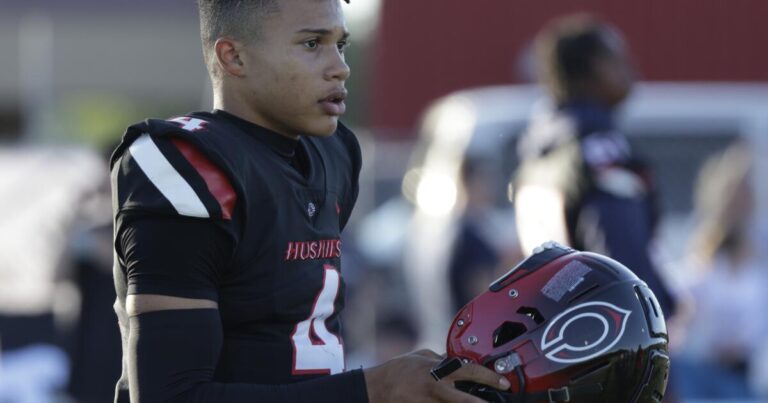California saw a record number of students transferring for high school sports in the 2023-24 school year, with 17,068 students transferring schools, according to final statistics from the California High School Association, the state’s governing body.
This number surpasses the previous record of 16,839 set in the 2017-18 academic year. Among the 10 sections, the Southern Section had the most transfer students with 6,928, an increase of 545 (8.56%) from last year.
There’s clear evidence that parents are transferring their sons and daughters for sports reasons. That was evident during the 2020-21 school year, when the pandemic shut down sports seasons and there were just 7,210 transfers statewide. The following school year, transfers doubled to 14,818 and have increased every year since.

California high school sports transfer numbers for 2023-24.
(CIF)
Students who transfer without changing their residency will lose eligibility for one month of the season, while students who change their residency will become eligible immediately.
The question is whether the rising number of transfers should be a concern for CIF officials and what options are available to make people understand they need to follow the rules.
“Ninety-eight percent of our students don’t transfer, and we know it’s the high-profile transfers that our members want to focus on, and that’s something we’ll be discussing this fall,” CIF Executive Director Ron Nocetti said.
Nochetti has created a committee to consider CIF priorities for the next few years. He also said participation has grown from 763,000 to 806,000.
The transfer numbers were released after an unusual high school basketball season in which Harvard-Westlake won the State Open Division title and King/Drew won the City Section Open Division title without any transfer players.
“Just because we’re seeing record numbers of transfers doesn’t necessarily mean the rules are being broken,” said Terry Burnham, athletic director at Harvard-Westlake, who will join the Southern Region executive committee this year. “I don’t think kids are transferring because a coach is lurking in the bushes saying, ‘Come over here.’ It’s more often because a family looks at the situation at a particular school and thinks, ‘You know, I don’t like this situation. I can play faster here.’ I think the majority of these transfers are initiated by parents and families more than by coaches.”
In the Southern Section, the largest section with over 560 schools, the schools send you the information once your transfer information is submitted. The Southern Section verifies the documents online. They rarely send someone to the schools to verify the information.
In contrast, the City Section, which oversees 159 schools, sends commissioners to schools that accept multiple transfer players from a particular sport to convene parents, coaches and administrators to go through the paperwork and address any concerns, and it doesn’t rely on schools simply approving players’ transfers.
While the CIF has promoted education-based high school sports, the first-ever increase in more than 17,000 transfers statewide in a changing environment where private schools compete with public schools for athletes and athletic trophies is something section commissioners and member schools cannot ignore.

